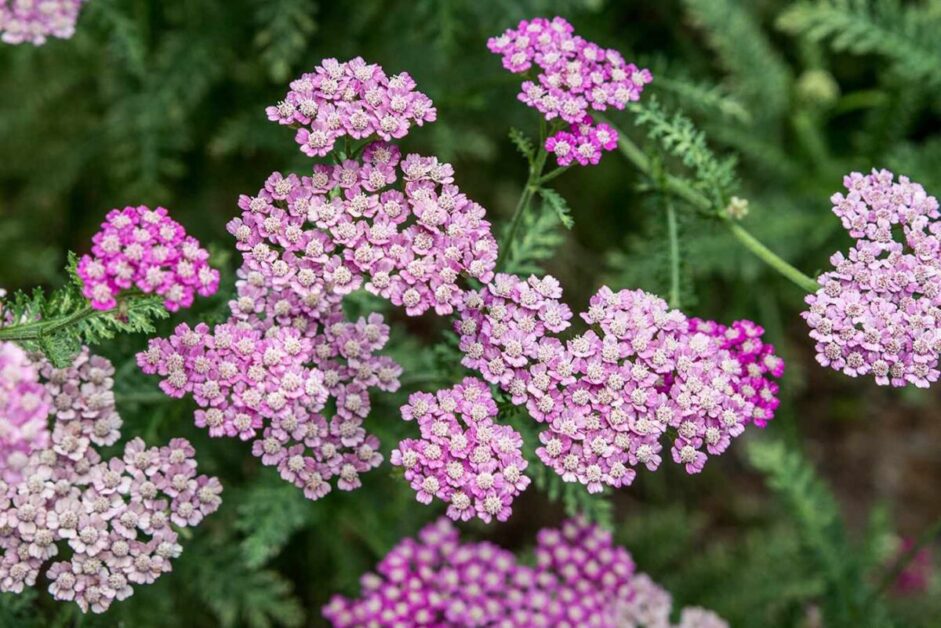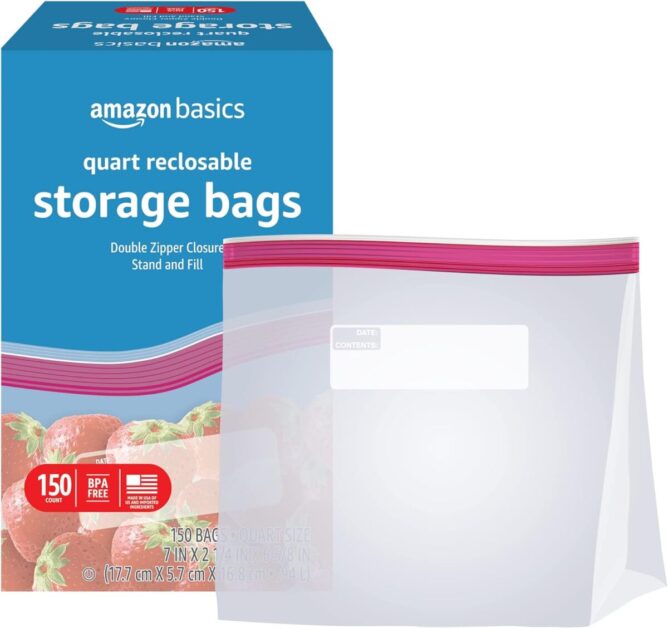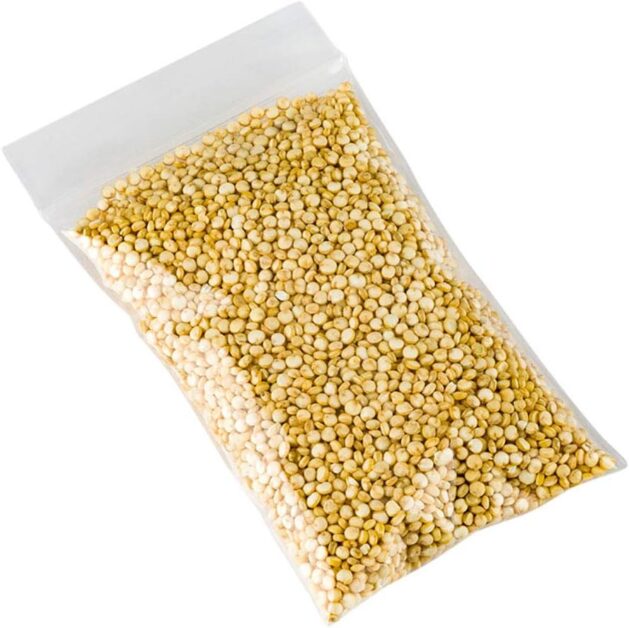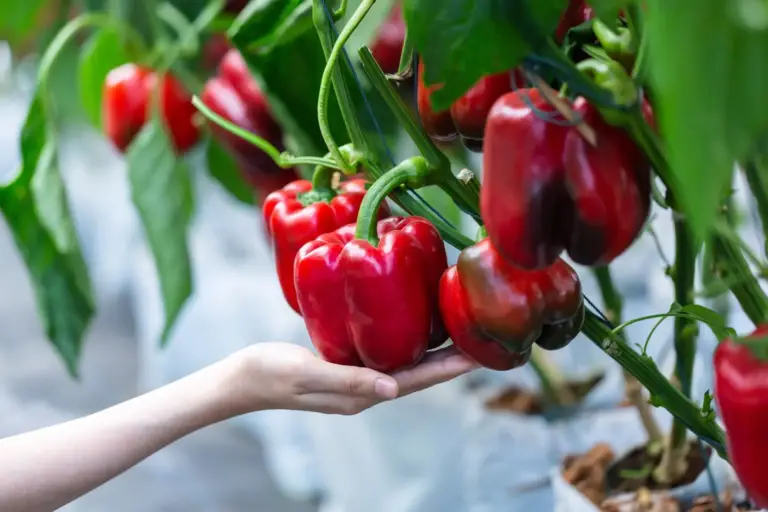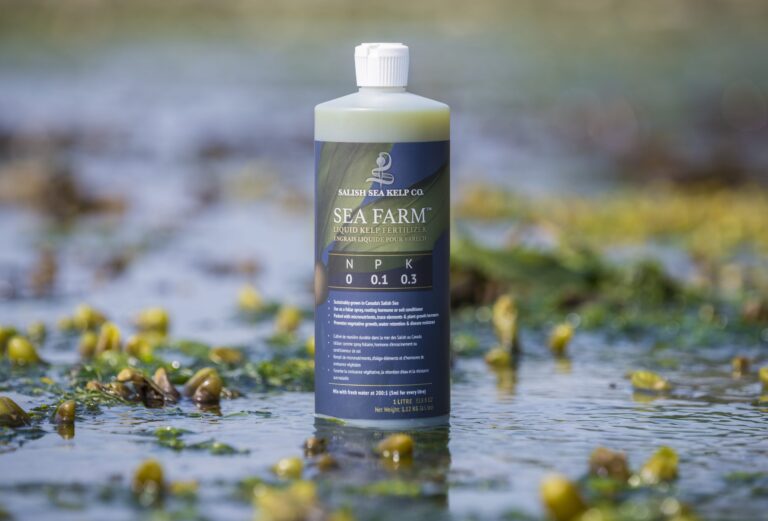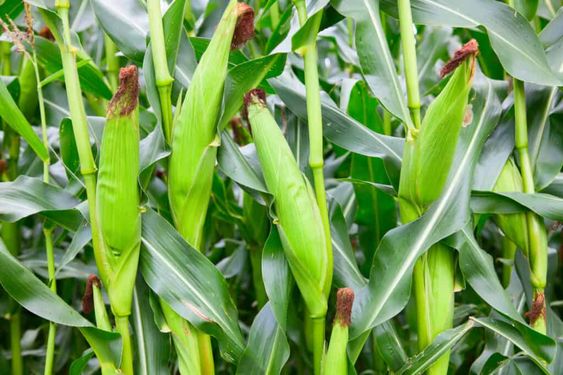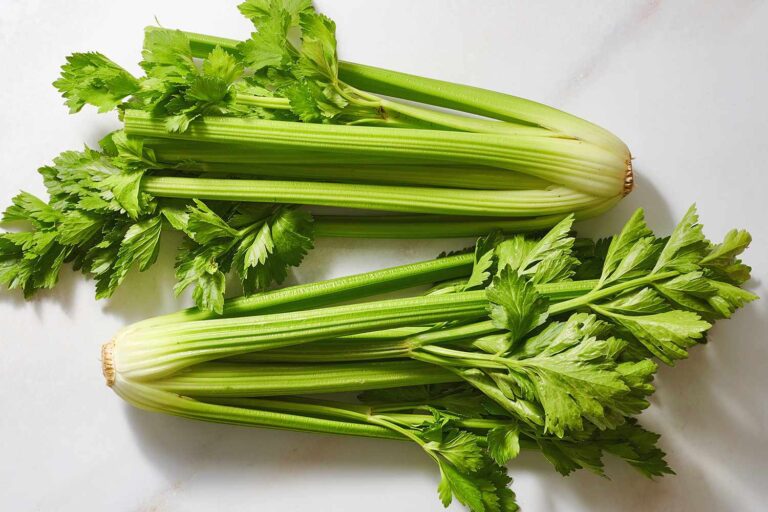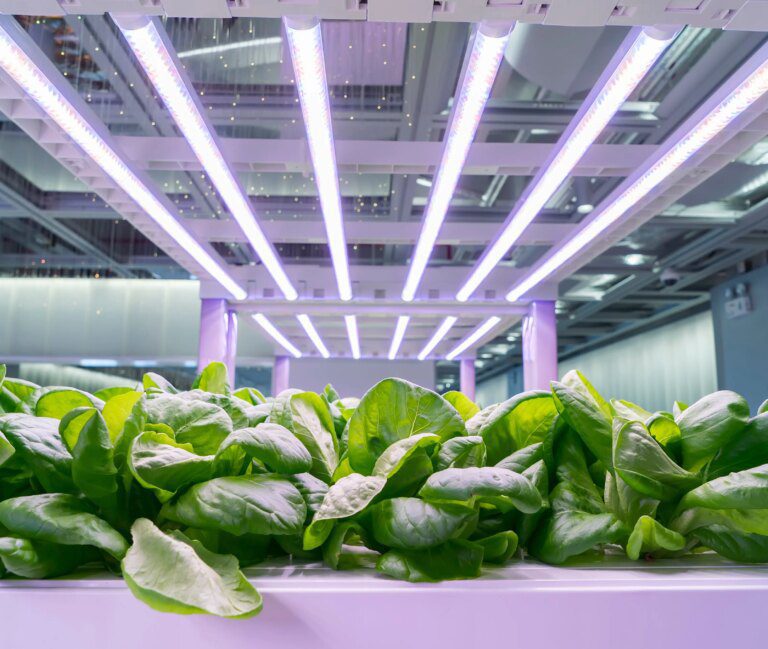Yarrow: Planting, Growing, and Care
Are you ready to add a touch of charm and versatility to your garden with yarrow, the beloved herb known for its beauty and practicality? Did you know that yarrow is not only a favorite among pollinators but also a valuable addition to herbal medicine and landscaping? From its feathery foliage to its clusters of colorful blooms, yarrow is a delightful plant that offers both aesthetic appeal and functional benefits. Join us on a journey through the world of planting, growing, and caring for yarrow as we share expert tips and insights to help you cultivate this versatile herb with success. Get ready to enhance your garden with the timeless beauty and usefulness of yarrow!
Table of Contents
Understanding the Yarrow Plant: A Guide to Its Characteristics and Uses
Yarrow (Achillea millefolium) is a beautiful and versatile perennial plant that offers a variety of characteristics and uses. With its feathery, fern-like leaves and vibrant clusters of flowers, yarrow adds a touch of elegance to any garden. Its long blooming period, from late spring to early fall, ensures a continuous display of color throughout the growing season.
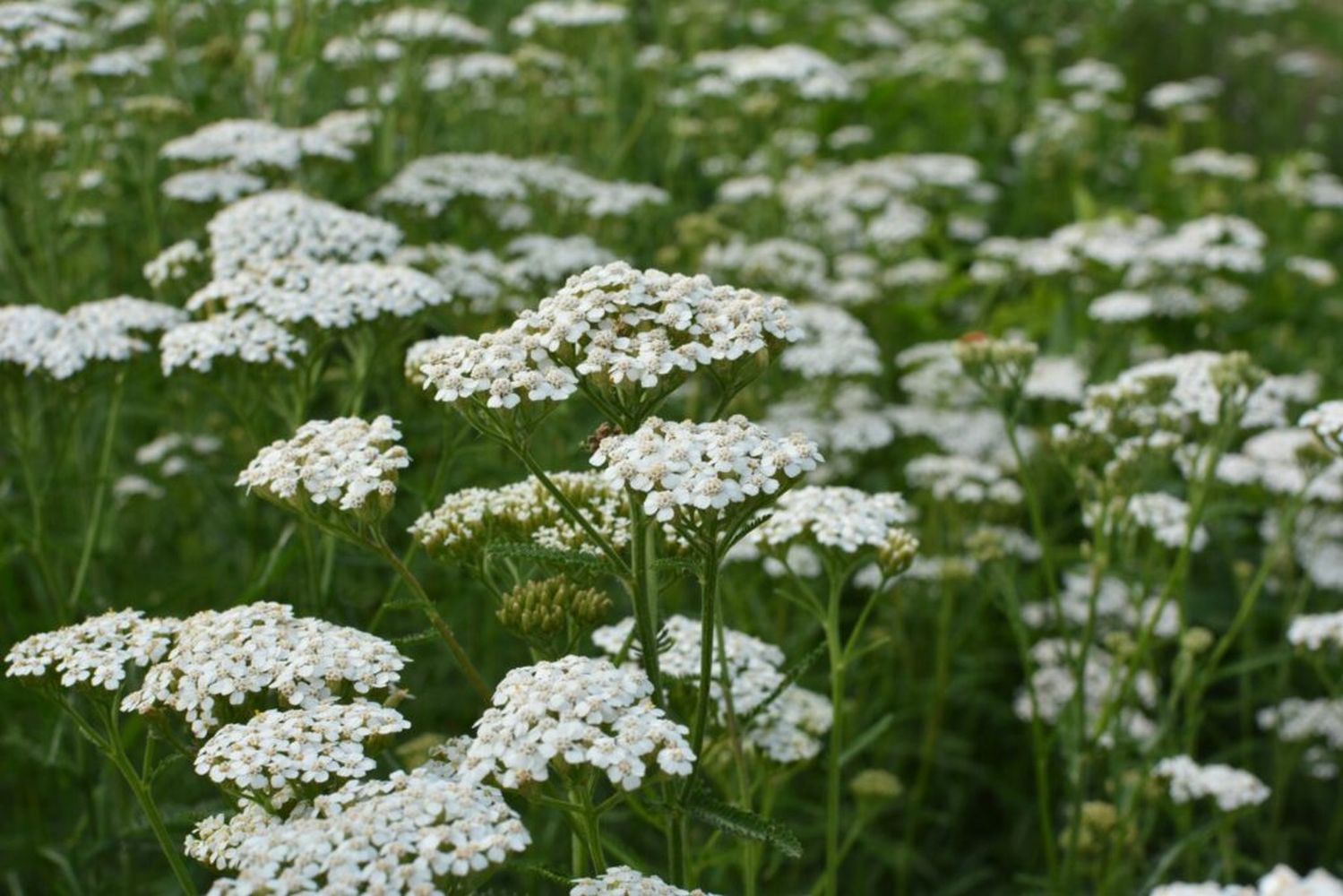
Thrives in full sun but can tolerate partial shade.
Known for its drought tolerance, making it ideal for low-maintenance landscapes.
Can grow in various soil types as long as it is well-drained.
Adaptable to a wide range of soil pH levels, from acidic to alkaline.
Varied height options, from compact varieties to taller cultivars up to three feet tall.
Feathery, fern-like leaves and vibrant clusters of flowers add elegance to any garden.
Long blooming period from late spring to early fall ensures continuous color display.
Traditional medicinal uses include treating inflammation, digestive disorders, and wounds.
Contains essential oils, flavonoids, and compounds with therapeutic properties.
Potential antimicrobial and anti-inflammatory effects have been observed.
Leaves and flowers can be brewed into tea or used in salads, soups, and desserts.
Yarrow has a long history of use in traditional medicine dating back centuries.
Used by various cultures for its healing properties and culinary applications.
As an expert in gardening, hydroponics, botany, and agronomy, providing accurate information on yarrow is crucial.
Informing gardeners about yarrow’s characteristics and uses empowers them to make informed decisions.
Yarrow’s beauty, adaptability, and therapeutic benefits make it a valuable addition to any garden.
Selecting the Ideal Location for Your Yarrow: Factors to Consider
:max_bytes(150000):strip_icc()/achillea-growing-yarrow-in-the-perennial-garden-1402830-08-f2849b611a634980b597a5b5088890d7.jpg)
When selecting the ideal location for your yarrow plants, there are several factors to consider that will impact their growth and overall health. Here are some key points to consider:
- Sunlight Exposure:
- Yarrow thrives in full sun, so choose a location that receives at least six hours of direct sunlight each day.
- Ample sunlight ensures efficient photosynthesis and abundant blooms.
- Soil Quality and Drainage:
- Yarrow prefers well-draining soil with a pH between 6.0 and 7.0.
- It can tolerate various soil types (sandy or clayey) as long as they have good drainage.
- Avoid heavy clay soil or areas with excessive moisture to prevent root rot and diseases.
- Yarrow’s drought tolerance makes it suitable for gardens with limited water availability.
- Space and Neighbors:
- Yarrow has a spreading habit and can grow up to three feet in width.
- Provide enough space to prevent overcrowding neighboring plants.
- Consider its deep root system when planting near trees or shrubs.
Remember, thoughtful consideration of these factors will help you create an ideal environment for your yarrow plants, ensuring a thriving and beautiful garden. Stay tuned for soil preparation tips in our next section! 🌼🌿.
Preparing the Soil for Yarrow Planting: Tips for Optimal Growth
Preparing the soil for yarrow planting is crucial for ensuring optimal growth and thriving plants.

By taking these soil preparation steps, gardeners can create an optimal foundation for yarrow planting. The right soil type, pH level, and organic content all contribute to healthy plant growth and may result in vibrant blooms and bountiful foliage. With proper soil preparation, gardeners can support the yarrow’s natural resilience and ensure successful cultivation.
Propagation Methods for Yarrow: From Seeds to Division
Yarrow, with its delicate yet resilient blooms, is indeed a delightful addition to any garden. If you’re keen on expanding your yarrow collection, let’s explore the two common propagation methods: starting from seeds and dividing existing plants.

- Starting from Seeds:
- Preferred Choice: Gardeners who relish growing plants from scratch often opt for this method.
- Timing: Begin by sowing yarrow seeds directly into well-drained soil during early spring or late fall.
- Germination: Yarrow seeds require light to germinate. Gently press them onto the soil surface without covering.
- Moisture: Keep the soil consistently moist, but avoid overwatering.
- Emergence: Within two to three weeks, tiny yarrow seedlings will emerge from the soil.
- Thinning: As they grow, thin them out, providing ample space for each plant to develop fully.
- Patience and Care: With patience and proper care, your yarrow seeds will transform into beautiful, flourishing plants.
- Division:
- Method: Widely used for yarrow, division involves separating clumps of the plant into smaller sections, each with its own roots and shoots.
- Ideal Timing: Perform division in early spring or late fall when the dormant period minimizes stress on the plant.
- Procedure:
- Digging Up: Carefully dig up the yarrow clump using a garden fork or spade, avoiding root damage.
- Division: Use a sharp knife or clean gardening tool to divide the clump into smaller sections.
- Healthy Shoots and Roots: Ensure each division has at least one healthy shoot and root system.
- Replanting: Replant the divisions in desired locations, ensuring adequate watering and maintenance.
- Benefits: This method expands your yarrow collection and rejuvenates older plants that may have become overcrowded or less vigorous over time.
Both seed starting and division offer gardening enthusiasts the opportunity to multiply their yarrow stock and enhance the aesthetic of their green spaces. Happy gardening! 🌼🌱 .
The Best Time to Plant Yarrow: Seasonal Considerations
Planting yarrow at the right time is crucial for its successful growth and development. Understanding the seasonal considerations can help gardening enthusiasts make informed decisions about when to plant this versatile herb. Yarrow is known for its ability to withstand different climatic conditions, making it suitable for a wide range of regions. However, there are a few key factors to keep in mind when determining the best time to plant yarrow.
In general, yarrow can be planted during the spring or fall seasons. Spring planting allows the plant to establish its roots before the hot summer months, while fall planting gives the plant a head start by allowing it to settle in before the dormant winter period. It’s important to consider the average temperatures and frost dates specific to your region. Yarrow can tolerate a range of temperatures, but extreme heat or frost could affect its growth and overall health.
Here’s a concise table summarizing the optimal planting times for yarrow based on different seasons:
| Season | Temperature Range (°F) | Optimal Planting Time |
|---|---|---|
| Spring | 50°F – 70°F | March – May |
| Summer | 60°F – 80°F | May – July |
| Fall | 50°F – 70°F | September – October |
| Winter | 40°F – 60°F | December – February |
Remember to consider your local climate and frost dates when planning your yarrow planting. Happy gardening! 🌼🌱
Planting Yarrow: Step-by-Step Instructions for Success
Planting yarrow is a straightforward process that requires careful preparation and attention to detail.Here is a detailed guide:
Selecting the Planting Location:
- Choose a sunny location with well-drained soil for optimal growth.
- Yarrow can tolerate various soil types but thrives in fertile, loamy soil.
Soil Preparation:
- Remove weeds and loosen the soil using a garden fork or tiller.
- Test the soil pH and adjust if needed to slightly acidic to neutral levels.
- Incorporate organic matter like compost or manure to enhance fertility and drainage.
- Level the soil surface to create a smooth planting bed.
Planting Yarrow:
- Yarrow can be propagated through seeds or division.
- If planting from seeds, sow them directly into the prepared soil, spacing them about 18 inches apart.
- Keep the soil consistently moist until germination occurs, typically in 14 to 21 days.
- If propagating through division, carefully divide an established plant into smaller sections and replant them at the same depth.
Watering and Maintenance:
- Water yarrow regularly during the establishment period.
- Once established, yarrow is drought-tolerant and requires infrequent deep watering.
- Water deeply but allow the soil to dry out between waterings to prevent root rot.
By following these step-by-step instructions, you can ensure successful planting of yarrow in your garden. With its beautiful blooms and multitude of uses, yarrow is a versatile and rewarding plant to grow.
Watering Yarrow: Essential Guidelines for Proper Moisture Levels
Proper watering is indeed crucial for the health and vitality of yarrow plants. Yarrow, with its delicate yet resilient blooms, benefits from thoughtful moisture management. Let’s dive into the specifics:
- Balancing Act:
- Overwatering can lead to root rot and fungal diseases.
- Underwatering results in stunted growth and fewer flowers.
- Strive for the right balance.
- Soil Considerations:
- Yarrow prefers well-draining soil to prevent waterlogged conditions.
- Once established, water yarrow once a week during dry periods.
- Monitor the top few inches of soil for moisture levels.
- Timing Matters:
- Water yarrow in the morning to allow foliage to dry before evening.
- Damp conditions can lead to fungal diseases.
- Check Soil Moisture:
- Insert your finger or a moisture meter a few inches into the soil.
- If it feels dry, it’s time to water.
Remember, proper watering is just one piece of the puzzle. Combine it with other factors like sunlight, soil quality, and spacing to cultivate a thriving yarrow garden. Happy gardening! 🌼🌱
Fertilizing Yarrow: Nutrient Requirements and Application Techniques
To thrive and produce vibrant blooms, yarrow requires adequate nutrients throughout its growth cycle. Understanding the nutrient requirements and employing the proper application techniques will ensure optimal growth and enhance the overall health of your yarrow plants.
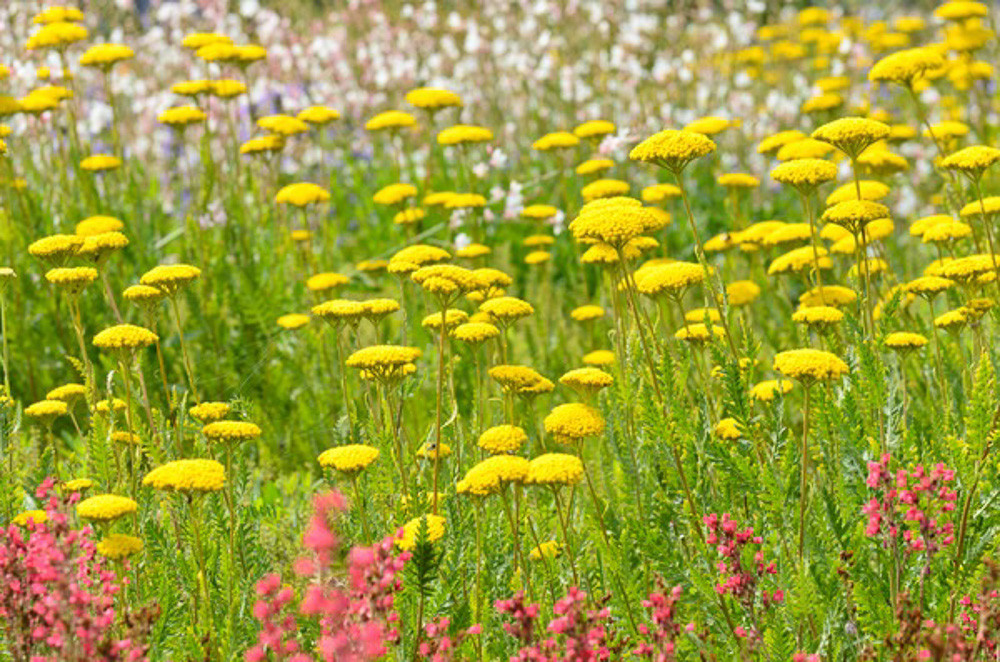
Nutrient Requirements:
- Nitrogen (N): Essential for lush foliage and robust growth.
- Phosphorus (P): Aids in flower development and root establishment.
- Potassium (K): Strengthens resistance to diseases and stressors.
Recommended Fertilizer:
- Use a balanced fertilizer with an N-P-K ratio of 10-10-10 or 20-20-20.
- Provides essential macronutrients for yarrow growth and development.
Application Technique:
- Apply slow-release granular fertilizer in early spring and midsummer for established yarrow plants.
- Ensure soil moisture before fertilizing to prevent root burn.
- Spread fertilizer evenly around the base in a wide band and work it into the topsoil.
- Avoid over-fertilizing to prevent issues like weak stems, reduced flowering, and susceptibility to diseases and pests.
Nutrient Requirements and Application:
- Nitrogen: 100-150 ppm, apply balanced NPK fertilizer every 4-6 weeks during the growing season.
- Phosphorus: 50-75 ppm, incorporate phosphorus-rich fertilizer during planting or top-dress annually.
- Potassium: 150-200 ppm, apply potassium sulfate or potassium nitrate every 4-6 weeks during the growing season.
- Micronutrients: Varies, apply as needed based on soil test results.
Remember, yarrow plants generally thrive in lean soil and can tolerate nutrient-poor conditions. Over-fertilizing may result in weak stems, reduced flowering, and a greater susceptibility to diseases and pests. Monitoring the appearance of your yarrow plants and adjusting the fertilization regimen based on their specific needs will help maintain their vitality and ensure an abundance of colorful blossoms.
Managing Pests and Diseases in Yarrow: Prevention and Treatment Measures
Pests and diseases can be a nuisance for yarrow plants, but with proper prevention and treatment measures, you can keep your yarrow healthy and robust.
| Pests & Diseases | Characteristics | Symptoms | Treatment | Effects |
|---|---|---|---|---|
| Aphids | Small, soft-bodied insects that suck sap from yarrow leaves | Stunted growth, distorted leaves, sticky residue | Remove manually, use insecticidal spray or dust | Reduced plant health |
| Spider Mites | Tiny, spider-like mites feeding on yarrow leaf undersides | Yellowing, webbing, leaf damage | Spray with water to dislodge, use insecticidal soap | Weakened plants |
| Leaf Miners | Larvae tunneling inside yarrow leaves and stems | Discolored, distorted leaves | Prune affected parts, improve overall plant health | Reduced vigor |
| Powdery Mildew | White, powdery fungal growth on yarrow leaves | Wilting, yellowing, decline | Fungicide-treated seeds, soil drenches | Impaired growth |
| Root Rot | Fungal disease causing root decay | Discolored, rotting roots | Well-draining soil, proper irrigation | Plant decline |
| Downy Mildew | Grey or white fungal growth on yarrow leaves | Surface discoloration | Improve air circulation, fungicides | Aesthetic damage |
Remember to regularly inspect your yarrow plants for signs of infestation or disease and take appropriate action promptly. By understanding and managing these issues, you can maintain healthy and beautiful yarrow in your garden.
Pruning Yarrow: Techniques to Maintain Health and Shape
Pruning is an essential technique for maintaining the health and shape of yarrow plants. By removing dead or damaged foliage, encouraging air circulation, and promoting new growth, pruning can help yarrow thrive and contribute to a visually appealing garden. When it comes to pruning yarrow, there are a few key techniques to keep in mind.

By following these pruning tips, you can help your yarrow plants thrive and continue to beautify your garden.
Remember, however, that each yarrow variety may have specific pruning requirements, so it is essential to consult specific care instructions or seek advice from a knowledgeable horticulturist. Pruning yarrow may seem intimidating at first, but with practice and careful attention, it can become a rewarding and enjoyable task that enhances the overall beauty of your garden.
Supporting Yarrow Growth: Staking and Mulching Techniques
Let’s explore the essential techniques for supporting the growth of yarrow plants: staking and mulching.
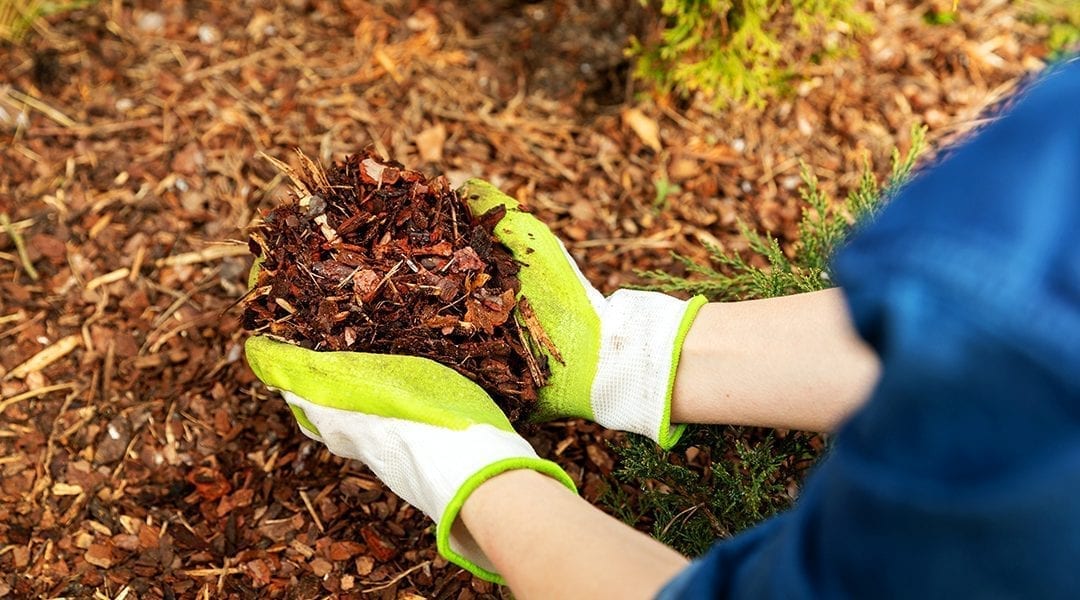
- Staking:
- Purpose: Yarrow grows tall and produces delicate flower heads. Staking prevents bending or breaking under the weight.
- Materials: Use bamboo, metal, or sturdy wooden rods.
- Procedure:
- Insert stakes into the ground next to the yarrow plant.
- Gently tie them with plant ties or twine.
- Height: Stakes should reach at least 2 to 3 feet, depending on the yarrow variety.
- Benefits: Secure stakes protect against strong winds and heavy rainfall, preventing damage and hindering growth.
- Mulching:
- Purpose: Mulching supports yarrow growth by retaining soil moisture and suppressing weeds.
- Materials: Choose organic options like straw, wood chips, or shredded leaves.
- Application:
- Spread mulch evenly around the base of the plant.
- Leave a small gap around the stem to prevent moisture buildup and potential rot.
- Insulation: Mulch acts as an insulator, protecting plant roots from extreme temperatures.
- Water Conservation: Reduces the need for frequent watering.
By implementing these techniques, gardeners can ensure optimal yarrow growth and maintain healthy, beautiful plants in their gardens. 🌼🌱
Having used the VELCRO Brand ONE-WRAP Garden Ties, I can attest to their effectiveness in supporting plant growth. They are easy to use, gentle on plants, and reusable. The ability to cut them to the desired length reduces waste, and their strong grip ensures plants remain well-supported. Overall, I highly recommend these ties for anyone looking for reliable and versatile plant support solutions.
- Secure and Durable: The VELCRO Brand ONE-WRAP Garden Ties offer strong grips that keep flowers and plants staked, supported, and securely bundled together. This durability ensures that plants remain upright and supported, especially in adverse weather conditions.
- Gentle on Plants: The soft side of the ties won’t scratch or damage plants, ensuring their health and well-being. This feature is essential for maintaining the integrity of delicate plant stems and foliage.
- Adjustable and Reusable: These ties are adjustable and can be cut to the desired length, providing flexibility for various gardening needs. Moreover, they are reusable, making them a cost-effective and sustainable option for gardeners.
- Weather Resistant: The strong gripping action of the ties keeps them securely in place even during stormy and inclement weather. This weather resistance ensures continuous support for plants throughout changing seasons.
- Multi-purpose Use: Apart from plant support, these ties can be used for various purposes such as securing trees, tools, and fencing. This versatility adds value to the product, making it suitable for a wide range of gardening applications.
- Easy to Use and Remove: The VELCRO design allows for easy application and removal, providing convenience for gardeners. This ease of use simplifies gardening tasks and reduces time and effort spent on maintenance.
- Price Variability: While the product offers various sizes and lengths to choose from, the pricing may vary depending on the selected option. Some users may find certain sizes more expensive than others, affecting their purchasing decisions.
- Limited Color Options: The available color option is green, which may not suit every garden aesthetic or preference. Lack of color variety could be a drawback for users looking to match the ties with specific garden themes or décor.
- Potential Size Limitations: While the adjustable feature allows for customization, there may be limitations in terms of the maximum size or diameter of plants that can be supported effectively. This could restrict the applicability of the ties for larger plants or trees.
- Dependency on Hook-and-Loop Mechanism: The effectiveness of the ties relies on the hook-and-loop mechanism, which may degrade over time with prolonged use or exposure to environmental factors. Users may need to monitor the condition of the ties and replace them if they lose their grip strength.
- Not Suitable for Heavy-Duty Applications: While suitable for various gardening tasks, including supporting plants and securing light items, these ties may not be robust enough for heavy-duty applications. Users requiring stronger fastening solutions may need to explore alternative options.
Harvesting Yarrow: Timing and Methods for Optimum Medicinal Properties
The timing and methods for harvesting yarrow play a crucial role in maximizing its medicinal properties. Harvesting yarrow at the right time and using proper methods is essential to maximize its medicinal properties. Yarrow, with its health benefits and therapeutic uses, deserves careful attention during the harvest. Let’s dive into the details:
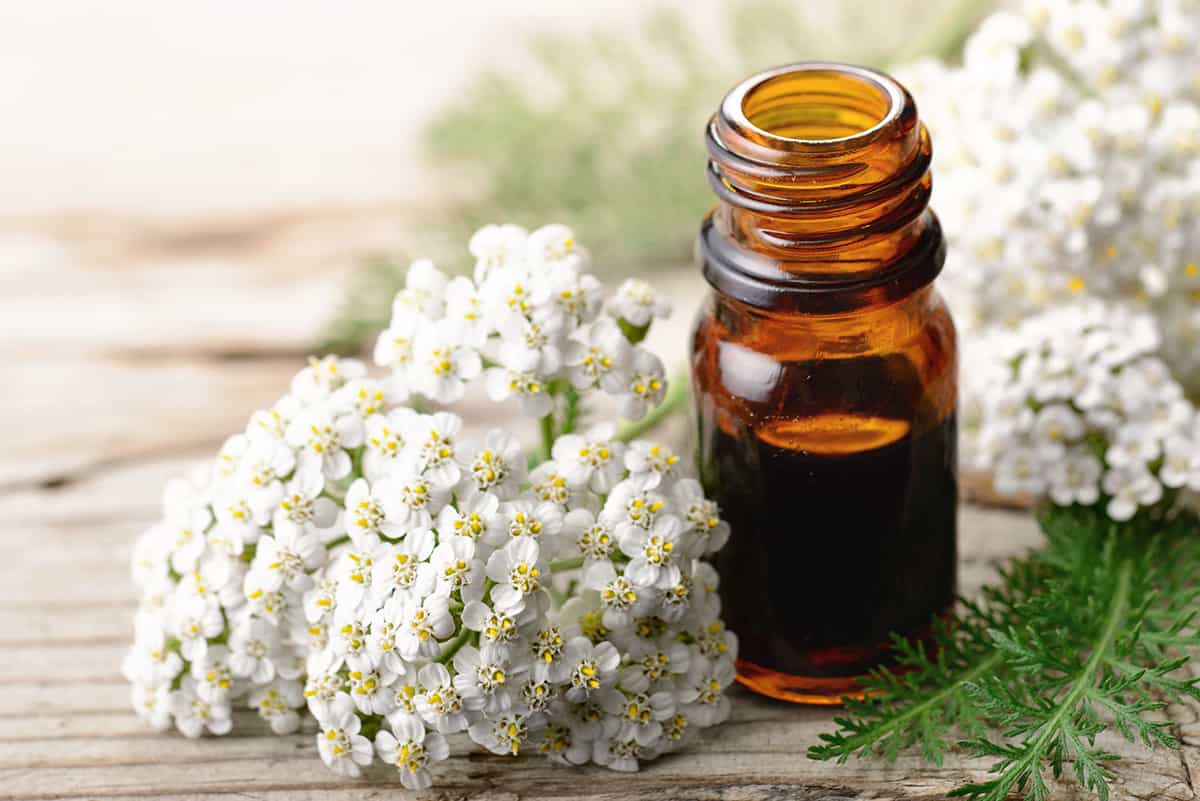
- Optimal Harvest Timing:
- Full Bloom: Ideally, harvest yarrow when it’s in full bloom, typically during the summer months.
- Active Compounds: This stage ensures the highest concentration of active compounds.
- Harvesting Methods:
- Traditional Approach: Cut the flowering stems just above the lower leaves.
- Tools: Use a sharp pair of pruning shears or scissors.
- Caution: Avoid damaging the plant and leave behind some stems for regrowth.
- Drying Process:
- Hang Upside Down: Bundle yarrow stems and hang them upside down in a well-ventilated area away from direct sunlight.
- Preserving Medicinal Compounds: Proper drying is crucial to preserve the medicinal compounds.
- Storage: Once fully dried, store yarrow in airtight containers (like glass jars) in a cool, dark place.
- Longevity: Well-dried yarrow can retain its potency for up to a year.
- Utilizing Yarrow:
- Herbal Remedies: Explore various methods:
- Tinctures: Alcohol-based extracts.
- Teas: Infuse dried yarrow in hot water.
- Salves: Topical applications for skin health.
- Herbal Remedies: Explore various methods:
By understanding these optimal practices, gardeners and herbalists can unlock yarrow’s full potential for medicinal applications. 🌼🌿🌸
In the next section, we will explore the different ways to dry and store yarrow effectively to maintain its potency and ensure its long-term usability. We will also discuss the various methods of utilizing yarrow in herbal remedies, such as making tinctures, teas, and salves. By understanding the optimal timing and methods for harvesting yarrow, gardening enthusiasts and herbalists alike can harness its full potential for medicinal applications.
Drying and Storing Yarrow: Preserving Its Benefits for Future Use
Drying and storing yarrow is an essential step in preserving its medicinal benefits for future use. By properly drying and storing yarrow, you can ensure that its active compounds, such as flavonoids and sesquiterpene lactones, remain intact and potent. Here are some guidelines to help you effectively dry and store yarrow.

- Gather Yarrow Stems: Collect yarrow stems and tie them into small bundles using twine or elastic bands.
- Hang Upside Down: Hang the bundles upside down in a cool, well-ventilated area, away from direct sunlight to retain color, aroma, and medicinal properties.
- Ensure Proper Air Circulation: Hanging yarrow in a well-ventilated space prevents mold or mildew growth.
- Avoid Humid Environments: Excessive moisture can compromise the quality of dried yarrow, so keep it away from humid conditions.
- Drying Time: Typically, it takes 1-2 weeks for yarrow to fully dry, but this duration may vary based on environmental factors.
- Remove Leaves and Flowers: Once dried, remove the leaves and flowers from the stems for storage.
- Use Airtight Containers: Place the dried yarrow in airtight containers like glass jars or resealable bags to protect from moisture and light.
- Label Containers: Label each container with the drying date and yarrow variety (if applicable) for easy identification.
- Storage: Store the dried yarrow in a cool, dark place to maintain its potency for up to a year.
By following these drying and storing techniques, you can ensure that your harvested yarrow remains usable for a long time, allowing you to reap its medicinal benefits whenever the need arises. Now that you have successfully preserved your yarrow, let’s explore the various ways you can utilize this versatile herb in your garden and beyond.
After trying out both the Restaurantware Bag Tek 3.5 x 2 Inch Resealable Zip Bags and the Amazon Basics Quart Storage Bags, it’s clear that both offer practical solutions for food storage needs. The Restaurantware bags impressed with their strong resealable seal, ensuring freshness and preventing spills. They’re versatile, convenient in size, and come in a bulk pack, making them suitable for various storage requirements. However, the additional shipping fees and limited size options might deter some users.
On the other hand, the Amazon Basics Quart Storage Bags offer a reliable option with their sturdy construction and ample capacity. They are freezer-safe and feature a secure seal, providing peace of mind for food preservation. While they lack the airtight feature of the Restaurantware bags, they compensate with a microwave-safe design, adding versatility to their usage. Overall, both products have their strengths and cater to different preferences and needs, making them valuable additions to any kitchen pantry.
✔ Reclosable Double Zipper Closure: Ensures a secure seal, keeping food fresh and preventing leaks or spills.
✔ Stand and Fill Base: The bags feature an expandable bottom that allows them to stand upright, facilitating easy filling and storage.
✔ BPA-Free: Made from BPA-free plastic, ensuring the safety of stored food items.
✔ Multi-purpose Use: Suitable not only for food storage but also for travel or non-food uses, adding versatility to their utility.
✔ Write-on Label: Helps in organizing stored food and keeping track of contents and dates.
❌ Environmental Impact: Like most plastic products, these bags contribute to environmental pollution and may not be the most eco-friendly option for long-term use.
❌ Limited Size: While the quart size is versatile, it may not be suitable for larger food items or quantities, requiring multiple bags for storage.
❌ Plastic Material: Some customers may prefer more sustainable alternatives to plastic for food storage, considering the environmental impact of plastic waste.
✔ Durable material: Made of high-quality plastic for reliable use.
✔ Versatile usage: Ideal for storing spices, vegetables, fruit slices, flour, snacks, and more.
✔ Airtight: Helps to keep ingredients fresh for longer periods.
✔ Convenient size: 3.5 x 2 inches, suitable for various storage needs.
Bulk quantity: Comes in a pack of 100, offering good value for money.
❌ Limited size options: While the 3.5 x 2-inch size is convenient, other size options may not be available.
❌ Plastic material: Not microwaveable, which limits its versatility in reheating food.
❌ Single-use: While reusable to some extent, these bags are primarily designed for single-use purposes.
❌ Environmental impact: Being made of plastic, they contribute to plastic waste unless properly recycled or disposed of.
❌ Price: While offering value for money in bulk, the initial investment might be higher compared to other alternatives.
Utilizing Yarrow in the Garden: Companion Planting and Design Ideas
Companion planting with yarrow can greatly enhance your garden’s beauty and functionality. This versatile herbaceous perennial is known for its attractive fern-like foliage and vibrant clusters of flowers, making it an excellent addition to any garden design. One popular way to utilize yarrow is by pairing it with plants that have similar sun and soil requirements.
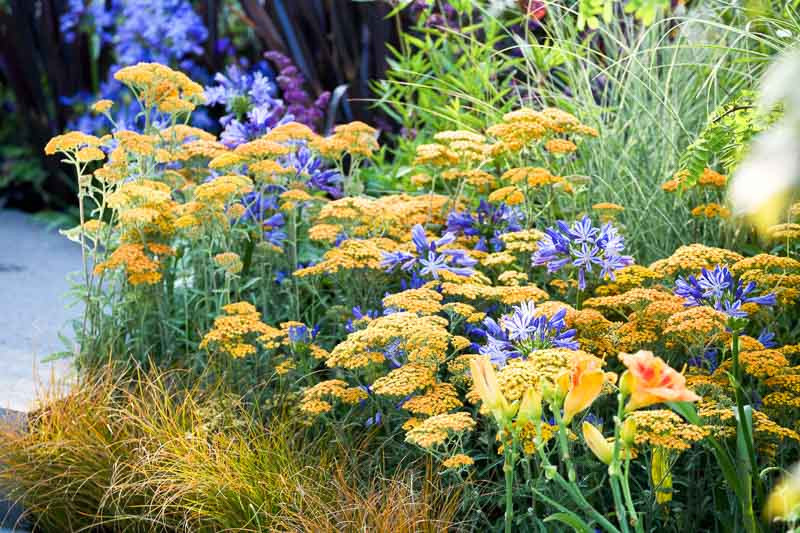
Combining yarrow with lavender creates a visually stunning and fragrant display.
Both plants thrive under full sun and well-drained soil conditions.
Yarrow’s dense growth habit can serve as a natural groundcover, providing a beautiful backdrop for taller plants or filling gaps between shrubs.
Yarrow attracts beneficial insects such as ladybugs, lacewings, and hoverflies.
These insects help control common garden pests like aphids and caterpillars.
By planting yarrow near vegetables or susceptible plants, you create a natural pest control system, reducing the need for harmful pesticides.
Yarrow’s aromatic foliage acts as a natural deterrent for certain pests, including deer and rabbits.
This adds an extra layer of protection to your garden.
So whether you’re looking to enhance your garden’s beauty or implement sustainable pest management strategies, incorporating yarrow into your companion planting scheme will surely yield fruitful results.
Yarrow Varieties: Exploring Different Colors and Cultivars
Yarrow, also known as Achillea, is an incredibly diverse plant that offers a wide range of colors and cultivars to choose from. Whether you prefer bold and vibrant shades or more subdued and delicate hues, there is a yarrow variety to suit every garden aesthetic. Let’s explore the different colors and cultivars of yarrow, and discover which ones might be the perfect addition to your garden.
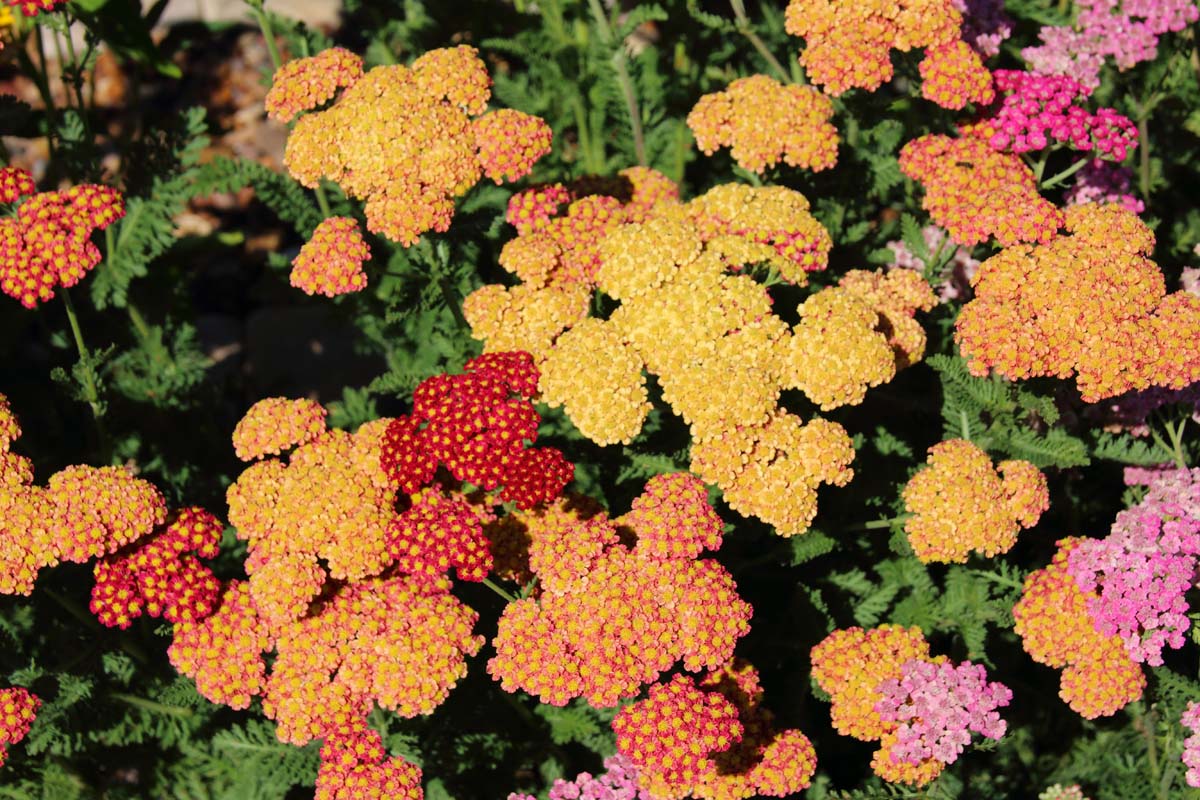
| Variety | Characteristics | Advantages | Disadvantages |
|---|---|---|---|
| Apple Blossom | White blooms, fragrant leaves, grows up to 3 feet in height | Showy flowers, aromatic foliage, attracts butterflies | May require staking in fertile soil, pruning for compact appearance |
| Moonshine | Gray foliage, light yellow flowers, medium height (18″ in bloom) | Drought-resistant, re-blooms consistently, nectar-rich flowers | Deadheading needed for continuous flowering, may flop in hot, humid climates or rich soils |
| Coronation Gold | Gray-green foliage, tall (30-36″ in bloom), upright growth habit | Tough and vigorous, long blooming, pairs well with other plants | Can flop if grown too wet, needs proper spacing to avoid overcrowding |
| Red Velvet | Deep red flowers fading to pink, ferny foliage texture | Long-blooming, bi-colored appearance, soft foliage texture | Requires deadheading for prolonged blooming, color fades over time |
| Greek Yarrow | Silver-gray evergreen foliage, compact white flowers, low groundcover | Evergreen foliage, year-round interest, compact growth habit | Limited flower color, may not suit all garden color schemes, low height compared to other varieties |
Stay tuned for our upcoming sections where we’ll discuss troubleshooting common yarrow issues and suggest solutions to help you keep your yarrow plants thriving.
Troubleshooting Common Yarrow Issues: Solutions to Common Problems
Yarrow is known for its resilience and ability to thrive in various growing conditions. However, there are some common issues that may arise when cultivating this versatile plant. Understanding these challenges and implementing appropriate solutions can ensure the success of your yarrow garden.
- Gray Mold (Botrytis)
- Appearance: Brown dead areas with gray fuzzy growth.
- Solution: Use fungicides, improve air circulation, and avoid overwatering.
- Powdery Mildew
- Appearance: White powdery substance on leaves.
- Solution: Increase sunlight exposure, prune affected areas, and apply fungicides.
- Spittlebug Infestations
- Appearance: Foam-like substance on plants.
- Solution: Remove spittlebugs manually, improve plant hygiene, and consider insecticidal soap.
- Yarrow in Lawns
- Control: Top dressing, regular mowing, fertilizing, and proper watering.
- Severe Infestations: Consider selective herbicides under professional guidance.
- Other Diseases
- Diseases: Fungal rust, crown gall, bacterial basal root rot.
- Treatment: Remove affected plants, adjust watering, avoid replanting in the same area.
Stay tuned for the next installment in this article series, where we will explore additional challenges that may arise when cultivating yarrow and provide effective solutions to overcome them.
Watch video for more information:
FAQ
Why is my yarrow plant not growing?
There could be several reasons why your yarrow plant is not growing. One possibility is that it is not receiving enough sunlight. Yarrow plants thrive in full sun, so make sure they are getting at least 6 hours of direct sunlight each day. Another possibility is that the soil is not well-draining, which can lead to root rot and stunted growth. Ensure that the soil is loose and well-drained. Additionally, yarrow plants may not grow if they are overcrowded or if they are not receiving enough water. Assess these factors and make the necessary adjustments for optimal growth.
What should I do if my yarrow plant is wilting?
If your yarrow plant is wilting, it is likely a sign of inadequate watering. Yarrow plants require regular watering, especially during hot, dry periods. Check the soil moisture level by inserting your finger about an inch into the soil. If it feels dry, it’s time to water. Be careful not to overwater, as yarrow plants prefer moderately moist soil. Adjust your watering schedule accordingly and monitor the plant’s condition.
How can I prevent pests from damaging my yarrow plant?
To prevent pests from damaging your yarrow plant, you can take several preventive measures. Firstly, maintain good garden hygiene by removing any fallen leaves or debris, as they can attract pests. Secondly, consider interplanting yarrow with companion plants known for repelling pests, such as marigolds or lavender. Additionally, you can use organic pest control methods like neem oil or insecticidal soaps to treat any infestations that may occur. Regularly inspect your yarrow plant for signs of pests and take swift action to prevent further damage.
What should I do if my yarrow plant has yellow leaves?
Yellow leaves on a yarrow plant can be a sign of nutrient deficiency or overwatering. Check the soil pH and nutrient levels to ensure they are within the appropriate range for yarrow plants. If the pH is off or if the soil lacks essential nutrients, consider amending the soil with organic matter or a balanced fertilizer specifically formulated for flowering plants. Additionally, yellow leaves can be a sign of overwatering, so make sure the soil is well-draining and adjust your watering schedule accordingly.
Can I divide my yarrow plant to propagate it?
Yes, yarrow plants can be easily propagated through division. The best time to divide yarrow is in early spring or fall when the plant is not actively blooming. Dig up the entire plant and carefully separate the clumps into smaller sections, making sure each division has healthy roots and foliage. Replant the divisions in well-prepared soil, spacing them at least 12 inches apart. Water thoroughly after planting and provide proper care to encourage successful growth.

Studied Agricultural Engineering-Plant Protection at University of California, Davis.
Head of Content writing team at Southelmontehydroponics.com

